Madison Symphony Orchestra Program Notes
Overture Concert Organ
Series No.4
96th Season
May 20, 2022
Michael Allsen
This
final program features Madison
Symphony Orchestra organist Greg Zelek, timpanist John Jutsum,
and the Diapason
Brass: John Aley and Matthew Onstad, trumpets, Linda Kimball,
horn, Mark Hetzler,
trombone, and Joshua Biere, tuba. This wide-ranging program
includes solo
showpieces for organ by John Weaver and Arthur Sullivan, and a
work for brass
quintet by Anthony DiLorenzo. But most of this concert is
devoted to works
composed or adapted for various combination of organ, brass,
and timpani: music
in diverse styles by Eugène
Gigout, Robin
Dinda, Sergei Rachmaninoff, Edward Elgar, J.S. Bach, and
Alexandre Guilmant.
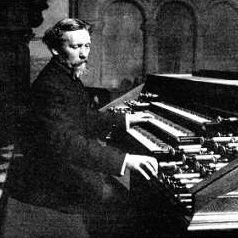 Eugène
Gigout (1844-1925)
Eugène
Gigout (1844-1925)
Grand chœur
dialogue,
arr. John Kuzma
The French organist and
composer Eugène Gigout was born
in Nancy, but moved to Paris at age 13 to study at the Ecole
Niedermeyer—a
conservatory devoted largely to the training of church
musicians. While there,
Gigout studied with Camille Saint-Säens, and eventually taught
at the school.
In 1863, at age 19, he was appointed organist at the Parisian
church of
Saint-Augustin, a position he would hold for some 62 years
until his death in
1925. In 1885, Gigout founded his own highly successful school
of organ playing
and improvisation, and in 1911, he succeeded Alexandre
Guilmant as organ
professor at the Paris Conservatory. Gigout published hundreds
of works during
the course of his long career, most of them concert and
service music for
organ. Like his teacher Saint-Säens, Gigout maintained a
rather conservative
style throughout his life, with a Classical approach to
musical form and
harmony. One of his finest works is the 1881 Grand chœur
dialogué,
written as a showpiece for the fine
instrument at Saint-Augustin, which was installed by the
English builder
Charles Barker. The title refers to the “dialogue” of timbres
between various
manuals and stops possible with a large organ. It is heard
here in an
arrangement by John Kuzma that replaces the alternation
between organ timbres
with alternation between organ and brass. It opens with a bold
and strident
fanfare before moving to lighter music introduced on the organ
manuals. This is
intensified by the full ensemble, eventually working its way
to a reprise of
the opening fanfare, and a wonderfully “over the top”
conclusion.
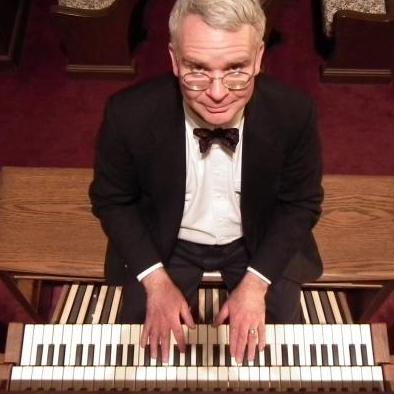 Robin
Dinda (b.1959)
Robin
Dinda (b.1959)
Nocturne for Brass Quintet and Organ
Robin Dinda was born in
Kansas, and grew up in Virginia and
Florida. Though he had piano lessons from his grandmother as a
child, he was
largely self-taught on organ—and by age 16, he was playing
solo organ recitals
in Europe. Since 1989, he has served on the faculty of
Fitchburg State
University in Massachusetts. He has long had a career as a
soloist, often in
duo recitals with his wife, organist Renea Waligora. (Dinda
has written organ
duos—four hands and four feet at a single instrument—for their
recitals, which have
since become standard repertoire.) His quiet Nocturne for
Brass Quintet and
Organ was composed in 1996. It begins with a
serene introduction
from the brass (the music is marked Ethereal; Freely)
which is decorated
by the organ. A lovely flowing theme is laid out by trumpet,
horn, trombone and
tuba in turn, and played finally by the full ensemble. The
organ then expands
on the theme before a hushed conclusion.
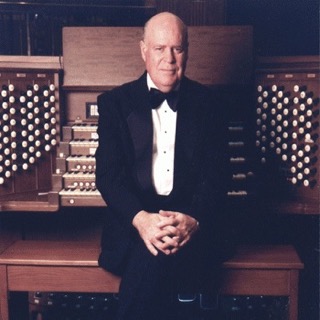 John
Weaver (1937-2021)
John
Weaver (1937-2021)
Toccata
Born in Pennsylvania,
organist John Weaver trained at
Philadelphia’s Curtis Institute and at the Union Theological
Seminary. He later
taught organ at Curtis (1972-2003), and also served as head of
the organ
department at New York’s Juilliard School (1987-2004). In 1970
he was appointed
organist at the Madison Avenue Presbyterian Church in New York
City, a position
he held until his retirement in 2005. Weaver continued an
active career as an
organ soloist into his early 80s. He wrote his short and
exciting Toccata
in 1968—a brilliant virtuoso showpiece for both the organist
and the organ. It
begins with a burst of triplets, answered by the pedals. There
is a brief
moment of repose in the middle, as one hand introduces a new,
slightly more
relaxed idea, though the triplet figure continues unbroken in
the other hand. It
ends with an aggressive reprise of the opening material.
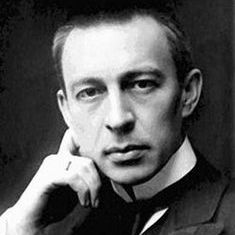 Sergei Rachmaninoff
(1873-1943)
Sergei Rachmaninoff
(1873-1943)
Vocalise,
Op.34, No.14
Rachmaninoff
was known in his time
as one of the world’s great pianists, and then and now as a
great composer of music
for his instrument and for orchestra. Much less well-known
today is his vocal music:
several exceptionally fine Russian Orthodox choral works and
over 80 art songs.
The great exception to this, however, is his Vocalise,
the last of
his Op.34 Fourteen
Songs (1912), one of
Rachmaninoff’s most familiar works, and one which is known in
many versions. As
anyone who has ever taken a voice lesson will tell you, a
“vocalise” is a wordless
piece or etude that is designed to work on a specific aspect
of range or technique,
or which allows the student to focus on creating a beautiful
sound without the need
to worry about enunciating a text. Rachmaninoff’s Vocalise is no mere exercise: in the original,
it frees the singer (and
the listener) to focus on the work’s gorgeous melody as it
spins out from the opening
bars. It was an immediate favorite of singers, and
Rachmaninoff returned to the
piece in 1915, revising it slightly, and creating a series of
instrumental arrangements—solo
piano, violin and piano, violin and orchestra, and in 1919,
for orchestra. The Vocalise
proved to be enduringly popular
and exists in hundreds more arrangements for everything from
choir and orchestra,
to saxophone quartet and solo accordion. Here it is heard in a
version combining
the beautiful sound of Linda Kimball’s horn playing with organ
accompaniment.
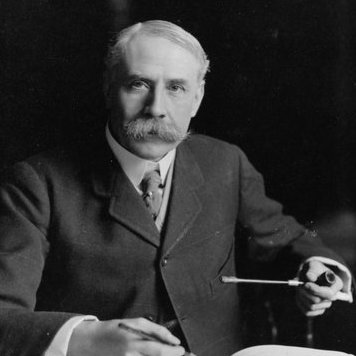 Edward
Elgar (1857-1934)
Edward
Elgar (1857-1934)
Pomp and Circumstance
March No.1 in D Major, Op. 39,
No.1, arr.
Hans Zellner and
Charles Warren
In 1901, when he
was riding high on the success of his Enigma
Variations and the oratorio The Dream
of Gerontius, Elgar turned to one of the most popular instrumental
forms of the day, the
march, producing the first two numbers of a series of five Pomp and Circumstance marches that would
appear sporadically over
the next 30 years. The title—a reference to a warlike
passage from
Shakespeare’s Othello—would
seem to
indicate a certain amount of seriousness and pretention, but
Elgar had simply
set out a to write a good old rousing march. After he
completed Pomp
and Circumstance March No.1 in 1901, he bragged
to a friend that
“I’ve got a tune that will knock ‘em flat.” And it did: two
days after their
premiere in Liverpool, both marches were played at one of
the famous Promenade
concerts in London, and the audience demanded two encores of March No.1—the
only double encore in the long history of the “Proms.” When
he was engaged
later that year to write a choral ode for the coronation of
King Edward VII,
Elgar reused the march’s trio section to set the final
section, Land of Hope
and Glory, which remains a popular British patriotic
song today. Its
inseparable connection with American graduation ceremonies
dates from 1905,
when Elgar was invited to receive an honorary doctorate at
Yale University. In
honor of the composer, March No.1 was
used as a recessional, and within a few years, colleges and
high schools across
the United States had adopted it as a graduation march.
After a brief opening
flourish, Elgar introduces the primary march, a pair of
jaunty and rhythmically
active tunes paired with blazing countermelodies. The tempo
suddenly slows for
the trio, as the Hope and Glory theme is laid out
with increasing
grandeur above a solemnly plodding bassline. There is a
recapitulation of the
march, and then the trio reappears in full glory, before a
short and lively
coda.
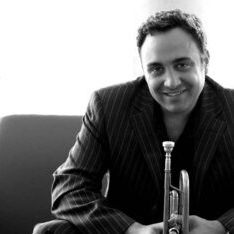 Anthony
DiLorenzo (b.
1967)
Anthony
DiLorenzo (b.
1967)
Fire Dance
Trumpet-player and composer Anthony DiLorenzo trained
at Philadelphia’s Curtis Institute, and later worked with
Leonard Bernstein at the
Tanglewood Center. As a performer, he has appeared as a
trumpet soloist with the
Boston
Symphony Orchestra, Boston Pops, and New York Philharmonic,
and has held positions
with the Philadelphia Orchestra, New World Symphony, Santa
Fe Opera, and Utah Symphony.
Also active in chamber music, DiLorenzo had a long tenure
with the City Center Brass
Quintet, one of America’s leading brass ensembles. As a
composer, he has extensive
television and film credits, and has won an Emmy award for
his television work.
His concert music has been performed by several major
orchestras and chamber ensembles
across the country. DiLorenzo composed the short and intense
Fire
Dance in 2004, for the City Center Brass Quintet. The piece
blazes through several
short ideas in the course of under four minutes: a
rhythmically complex opening,
a lyrical theme introduced by the tuba, and increasing
frantic music leading to
an exhilarating ending.
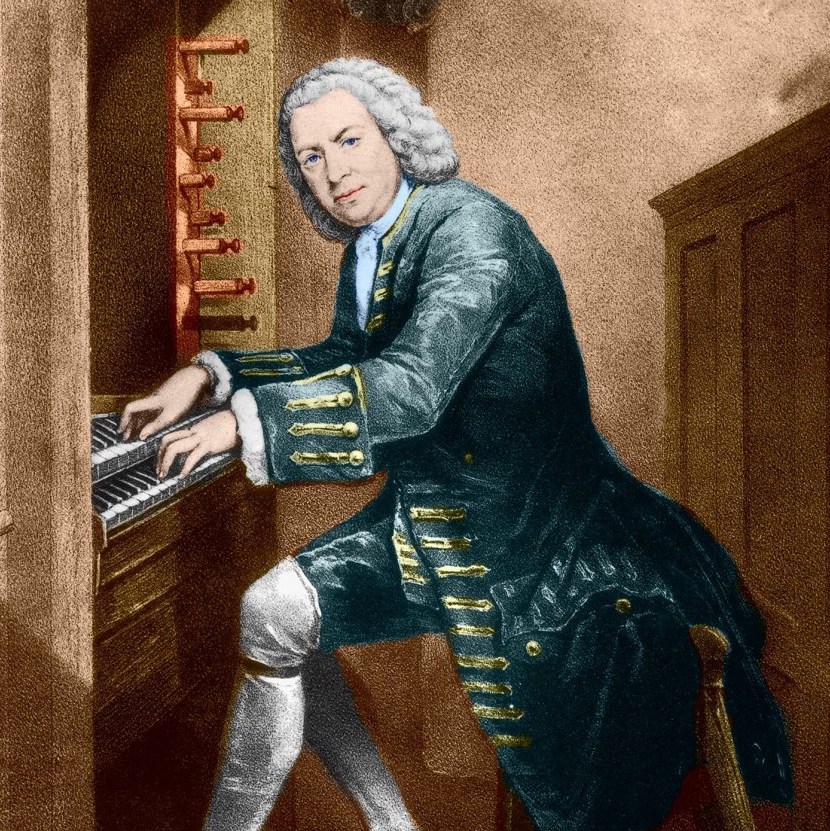 Johann
Sebastian Bach (1685-1750)
Johann
Sebastian Bach (1685-1750)
Toccata
and Fugue in D minor, BWV 565, version inspired by Randall Max
Bach was known in his
day primarily as one of
Germany’s great organists—as a keyboard composer and a
powerful improviser. It is
ironic then, that there is some doubt that the
organ work by Bach that nearly everyone knows—the famous Toccata and
Fugue in D minor
heard here—is in fact by Bach. A little background... There is
no original copy
of the work in Bach’s handwriting, and the earliest surviving
version was copied
by another organist, probably after Bach’s death. This in
itself is hardly unusual—most
of Bach’s keyboard music survives in copies by his sons or
other musicians. Most
biographers have assumed that this bravura
work was one the showy pieces a very young Bach wrote for his
first important professional
position, as church organist in Arnstadt, 1703-06. However,
since the 1980s others
have challenged the attribution of the work to Bach, noting
that there are some
technical crudities and other details that are inconsistent
with Bach’s undisputedly
authentic works—even suggesting that this later copy was an
organ arrangement of
a violin work. Biographers such as Christoph Wolff have
countered that some of the
unusual features in the work may in fact have been ingenious
adaptations to the
limitations of the organ Bach used at Arnstadt. All musicology
aside, however, this
work is now inextricably tied to Bach! There is a long
tradition of adapting this
work for soloists and ensembles, beginning with Leopold
Stokowski’s famous orchestral
transcription of 1927. It is heard it here in the original
organ version, but with
the addition of a prominent timpani part. The work begins with
a free-form toccata—an
improvisatory-style piece used as prelude. After a grand
conclusion, the fugue begins
with a complex and spiky subject. This is developed in intense
counterpoint until
the end, where there is a dramatic return to the texture of
the toccata.
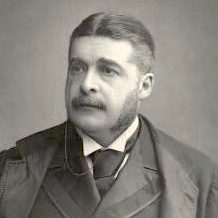 Arthur
Sullivan (1842-1900)
Arthur
Sullivan (1842-1900)
The
Lost Chord, arr. Alexander Schreiner
Though he is best known today
for the enduringly popular
series of operettas he wrote with W.S. Gilbert, Arthur
Sullivan was among the
most successful composers of Victorian England, composing in
many genres. He
wrote serious operas, popular orchestral works, large sacred
and dramatic
cantatas, hymns (including the well-known Onward,
Christian Soldiers),
and dozens of art songs and popular “parlor songs”—sentimental
songs written
for the enormous popular market, primarily sung at home. By
far his most popular
song was The Lost Chord, written in 1877, a
composition that came out of
personal tragedy. Sullivan had first tried to set this poem to
music in 1872 at
the time of his father’s death, but in 1877 he composed The
Lost Chord
while sitting at the bedside of his brother
Fred, completing it just a few days before Fred died. The
poem, by popular
Victorian poet Adelaide Ann Proctor, had been published in
1858 in The
English Woman’s Journal. It tells of an
organist—usually assumed to
be a woman, though that is never really specified—distracted
by some personal
tragedy, whose “fingers wandered idly, over the noisy keys.”
Suddenly the
organist stumbles upon a chord “like the sound of a great
Amen,” seemingly sent
from heaven. The next verses describe the chord’s effect,
flooding the room and
the organist with a sense of peace, love, and fulfillment,
before it finally
fades away. In the end, the organist seeks in vain to
rediscover the chord,
concluding that “It may be that only in Heav’n I shall hear
that grand Amen.”
Sullivan’s setting, originally for piano and solo voice, is
really a kind of
miniature romantic tone poem, beginning with a quiet
recitative that culminates
in the discovery of the “great Amen.” The middle section
conveys a sense of awe
as the chord fills the room and the organist’s spirit. There
is a brief moment
of turbulence near the end to represent the search for the
“lost chord divine,”
but it ends in an ecstatic mood, contemplating heaven. The
Lost Chord
was a tremendous hit, quickly introduced in concerts by
leading singers of the
day, and its sheet music went through several editions. It was
quickly picked
up by instrumentalists as well. The first recording of the
song—and, in fact,
one of the earliest surviving sound recordings of music of any
kind—was
a performance by cornet and piano captured on an Edison
phonograph in 1888. The
Lost Chord
became particularly
popular as a choral piece, and was a staple of British and
American church
choirs and choral societies well into the 20th century.
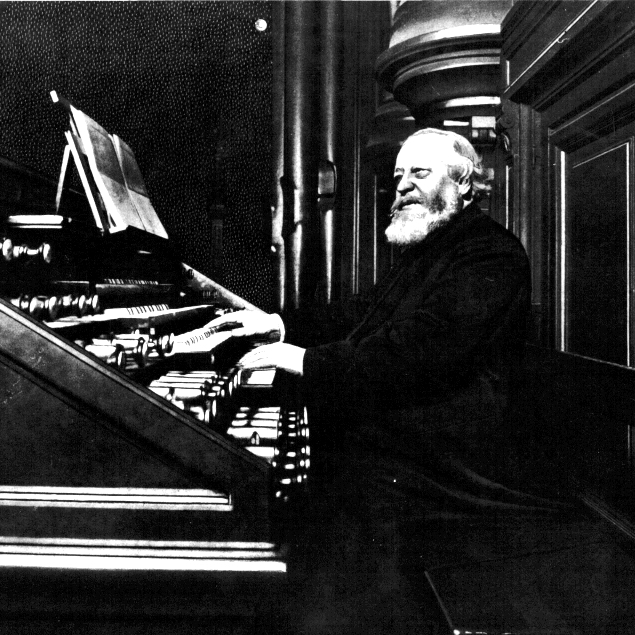 Alexandre
Guilmant (1837-1911)
Alexandre
Guilmant (1837-1911)
Final from Symphony
No.1 for Organ and Orchestra, Op.42,
arr. Craig
Garner
Guilmant was one of the
great French organists of
the “golden age” of French organ music, a contemporary and
colleague of Franck,
Saint-Saëns, Vierne, and Widor. He was born in the provincial
town of Boulogne-sur-Mer,
and after initial studies with his father—also an organist—and
at the Brussels Conservatory,
Guilmant settled in Paris, eventually serving as organist at
the prestigious new
parish church La Trinité. Throughout his career he was
associated with the organ-building
firm of Aristide Cavaillé-Coll, and was often brought in to
perform inaugural concerts
on its instruments. He toured widely as recitalist in Europe
and America, and in
1896, he joined the faculty of the Paris Conservatory as organ
professor. Guilmant’s
musical interests were broad: he was well aware of the latest
developments of the
French avant garde,
but was also passionately
interested in the music of Couperin, Handel, Bach and earlier
composers, editing
hundreds of pieces from the 17th and 18th centuries for
publication. He composed
a sprinkling of vocal pieces and a few small instrumental
works, but the vast majority
of his works are for organ. He published over 50 collections
of music with titles
like The Practical
Organist and The
Liturgical Organist—music still very
much in use by church organists today. He composed several
small works for organ
and orchestra—mostly for his popular concerts at Paris’s
Palais du Trocadero, a
concert hall that was built around a magnificent Cavaillé-Coll
instrument. Guilmant’s
most ambitious works for organ are a series of eight
multi-movement sonatas, written
between 1874 and 1906. He later orchestrated two of the
sonatas as symphonies for
organ and orchestra. The first sonata was transformed into the
Symphony
No.1, and
Guilmant played
its premiere at the Trocadero on August 22, 1878. It is heard
here in arrangement
by Craig Garner for organ with brass and timpani. Its third
movement, Final,
is the symphony’s exciting conclusion. It opens with a bold
toccata-style statement
by organ punctuated by the brass. This gives way eventually to
a broad chorale played
first by organ and then by brass. The two ideas are mixed in a
short development
section, before a full-throated reprise of the toccata and a
grandiose version of
the chorale. Trumpet fanfares lead into a splendid coda.
________
program notes ©2022 by J.
Michael Allsen